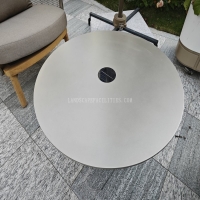Welcome to the website for landscape facilities products and knowledge.
How does the table’s design minimize the accumulation of dust or debris in crevices?
Modern table designs incorporate several innovative features to minimize dust and debris accumulation in crevices. The primary strategy involves seamless construction techniques that eliminate traditional joints and gaps where particles typically gather. Designers utilize smooth, continuous surfaces with minimal interruptions, ensuring there are no hidden corners for dust to settle.
Many contemporary tables feature rounded edges and curved corners instead of sharp 90-degree angles. This design approach not only enhances aesthetic appeal but also prevents the formation of dust-catching sharp internal corners. The gentle slopes and flowing lines create surfaces where dust cannot find stable resting places, making cleaning significantly more efficient.
Material selection plays a crucial role in dust prevention. Non-porous surfaces like laminated composites, tempered glass, and specially treated metals resist dust adhesion. These materials create surfaces where dust particles slide off easily rather than embedding themselves into microscopic pores. Additionally, advanced coatings can provide electrostatic properties that repel dust particles.
Smart engineering incorporates slightly angled surfaces on table components. Even minimal inclines of 2-3 degrees can effectively prevent horizontal surfaces from becoming dust collection points. This subtle design element ensures that any accumulated particles naturally slide off or become visible for easy removal.
Integrated design elements address potential problem areas. Rather than having separate legs attached with visible joints, many modern tables feature unified bases that flow directly from the table surface. This monolithic approach eliminates the crevices typically found where different components meet. For tables requiring assembly, manufacturers now use precision-fitting components that leave virtually no gaps when properly connected.
Advanced manufacturing techniques enable tighter tolerances between moving parts in extendable or adjustable tables. Where previous designs might have shown visible gaps between sliding sections, current engineering maintains consistent, minimal spaces that don't permit debris entry while preserving functionality.
The combination of these design principles results in furniture that maintains its clean appearance with minimal maintenance. Through thoughtful material selection, precision engineering, and intelligent form development, table designers have successfully addressed the age-old problem of dust accumulation in hard-to-reach places, creating pieces that are as practical as they are beautiful.
Related search:

Recommendation
Outdoor stainless steel table with solar-powered ambient lighting feature - excellent design.